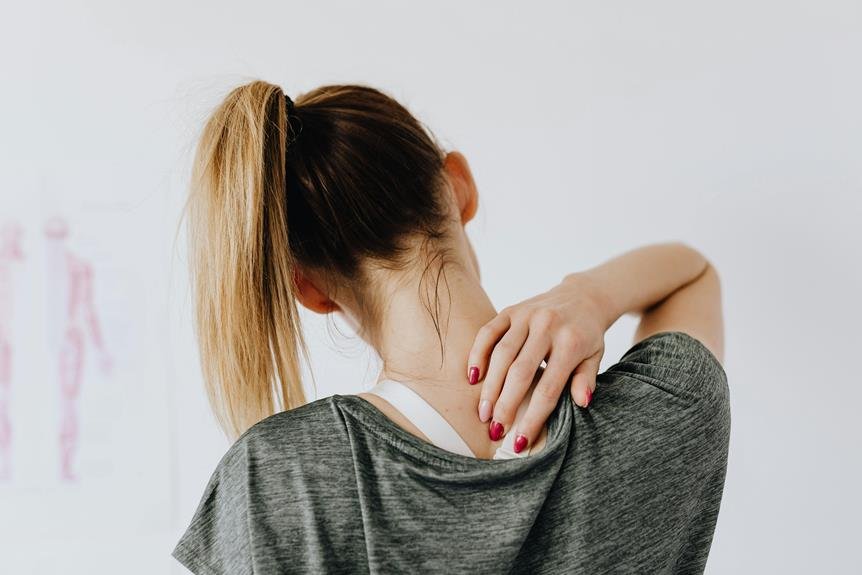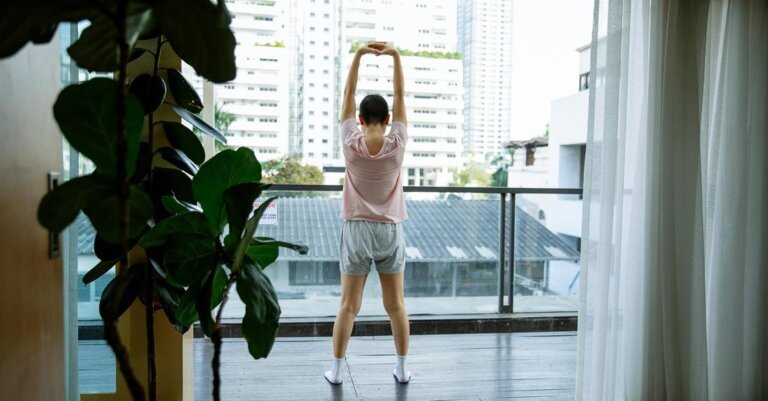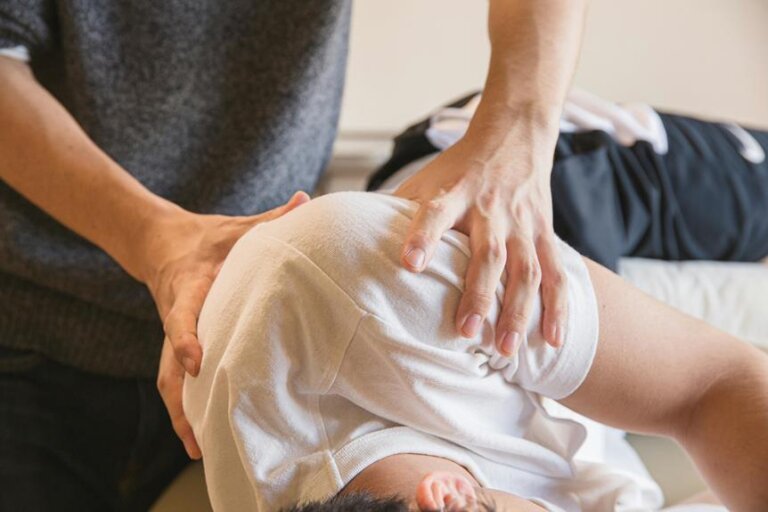Effective Exercises to Relieve Back Pain Today
Did you know that incorporating specific exercises into your daily routine can significantly alleviate back pain? By targeting key muscle groups and focusing on flexibility, you can find relief from discomfort and improve your overall quality of life.
Whether you're dealing with chronic back issues or seeking preventative measures, understanding the right exercises and techniques is crucial. In the following sections, we will explore effective strategies that can help you manage and potentially eliminate back pain, allowing you to regain control and comfort in your daily activities.
Stretching for Flexibility
To improve your flexibility and reduce back pain, start incorporating regular stretching exercises into your daily routine. Stretching is crucial for maintaining the health of your muscles and joints. Begin with gentle stretches, focusing on areas like your hamstrings, quadriceps, and lower back. Hold each stretch for about 30 seconds and remember to breathe deeply. Gradually increase the intensity and duration of your stretches as your flexibility improves.
Include dynamic stretches in your warm-up routine to prepare your muscles for activity. Leg swings, arm circles, and torso twists are excellent choices. Dynamic stretching can help improve your range of motion and prevent injury during exercise. After your workout, engage in static stretching to help your muscles relax and recover. Stretching post-exercise can also aid in reducing muscle soreness.
Incorporating yoga or Pilates into your weekly routine can further enhance your flexibility and core strength. These practices focus on controlled movements and deep stretching, promoting better posture and alignment. Remember, consistency is key when it comes to reaping the benefits of stretching. Make it a habit to stretch daily, and you'll soon notice improvements in your flexibility and a reduction in back pain.
Strengthening Core Muscles
Improving core strength is essential for alleviating back pain and enhancing overall stability and posture. Strong core muscles provide support to your spine, reducing the risk of injuries and discomfort. To strengthen your core effectively, incorporate exercises like planks, crunches, and Russian twists into your workout routine. These exercises target the muscles in your abdomen, lower back, and pelvis, helping to improve your body's ability to maintain proper alignment and stability.
When performing core-strengthening exercises, focus on engaging your abdominal muscles and avoiding straining your back. Start with a few repetitions and gradually increase the intensity as your strength improves. Consistency is key to seeing results, so aim to work on your core muscles several times a week.
Low-Impact Cardio Workouts
Enhance your back pain relief routine by incorporating low-impact cardio workouts that can boost your overall fitness levels without putting excessive strain on your joints. Low-impact cardio exercises are gentle on your back while still providing a great workout. Activities like swimming, walking, cycling, or using an elliptical machine can help increase your heart rate, improve circulation, and strengthen your cardiovascular system without jarring your spine.
When engaging in low-impact cardio workouts, remember to maintain proper form and start slowly if you're new to exercising. Gradually increase the intensity and duration as your fitness level improves. These exercises not only benefit your back but also contribute to weight management, better mood, and increased energy levels.
Consistency is key when it comes to reaping the benefits of low-impact cardio. Aim for at least 30 minutes of moderate exercise most days of the week. Always listen to your body, and if you experience any pain or discomfort, stop the activity and consult with a healthcare professional. Get ready to elevate your fitness routine and alleviate back pain with these low-impact cardio workouts.
Yoga Poses for Back Relief
Incorporate yoga poses into your routine for back relief by gently stretching and strengthening your muscles. Yoga can help alleviate back pain by improving flexibility, increasing blood flow to the spine, and promoting relaxation. Start with poses like Cat-Cow, Downward Facing Dog, and Child's Pose to stretch and lengthen your spine. These poses can help release tension in your back muscles and improve overall spinal alignment.
Additionally, practicing poses like Cobra, Bridge, and Sphinx can strengthen the muscles in your back, including the erector spinae and latissimus dorsi, which support the spine. These poses can help improve posture and reduce the risk of future back pain episodes. Remember to focus on your breath while holding each pose to enhance relaxation and release any built-up tension in your back.
Consistent practice of these yoga poses can lead to increased back strength, flexibility, and overall well-being. Make sure to listen to your body and modify poses as needed to avoid any strain or discomfort. Start incorporating these beneficial yoga poses into your daily routine to experience relief from back pain today.
Pilates Exercises for Alignment
For a different approach to relieving back pain and promoting alignment, consider incorporating Pilates exercises into your routine. Pilates focuses on strengthening the core muscles, which can help improve posture and spinal alignment, ultimately reducing back pain.
One effective Pilates exercise for alignment is the Pelvic Tilt. To perform this exercise, lie on your back with your knees bent and feet flat on the floor. Inhale to prepare, then exhale as you tilt your pelvis towards you, engaging your core muscles. Hold for a few seconds before releasing back to the starting position.
Another beneficial Pilates exercise is the Spine Twist. Sit tall with your legs extended in front of you, then twist your torso to one side while keeping your spine long. Hold briefly before returning to the center and twisting to the other side.
These Pilates exercises can help strengthen your core, improve flexibility, and enhance overall alignment to alleviate back pain.
Frequently Asked Questions
Can Back Pain Be Caused by Poor Posture, and if So, What Are Some Exercises to Improve Posture?
Yes, poor posture may cause back pain. To improve it, focus on exercises like planks, bridges, and rows. These target your core and back muscles, enhancing posture. Consistency is key for seeing lasting benefits.
Are There Any Specific Stretches or Exercises That Can Help Alleviate Back Pain Caused by Sitting at a Desk for Long Periods of Time?
To alleviate back pain from long desk sitting, try simple exercises like cat-cow stretches, seated spinal twists, and shoulder blade squeezes. These movements can help reduce tension and improve flexibility in your back muscles.
What Are Some Ways to Prevent Back Pain During Weightlifting or Other Strenuous Physical Activities?
When lifting weights or engaging in strenuous activities, ensure proper form to prevent back pain. Remember, statistics show that over 80% of adults experience back pain. Stay mindful of your posture and technique for a healthier back.
Are There Any Specific Yoga Poses or Pilates Exercises That Can Target Lower Back Pain Specifically?
To target lower back pain specifically, certain yoga poses like Child's Pose and Cat-Cow, along with pilates exercises like Pelvic Tilts and Swimming, can help strengthen and stretch the muscles in that area, providing relief.
How Often Should Someone With Chronic Back Pain Incorporate These Exercises Into Their Daily Routine for Maximum Relief?
You should aim to incorporate these exercises into your daily routine if you suffer from chronic back pain. Consistency is key for maximum relief. Start slow, listen to your body, and gradually increase frequency as you feel comfortable.
Conclusion
As you incorporate these exercises into your routine, remember that each stretch, each core workout, each yoga pose is like a step towards unlocking the chains of back pain that weigh you down.
Embrace the journey of healing, symbolized by the strength and flexibility you gain with each movement. Let these exercises be the key to unlocking a pain-free future, where you can stand tall and move freely without limitations.






